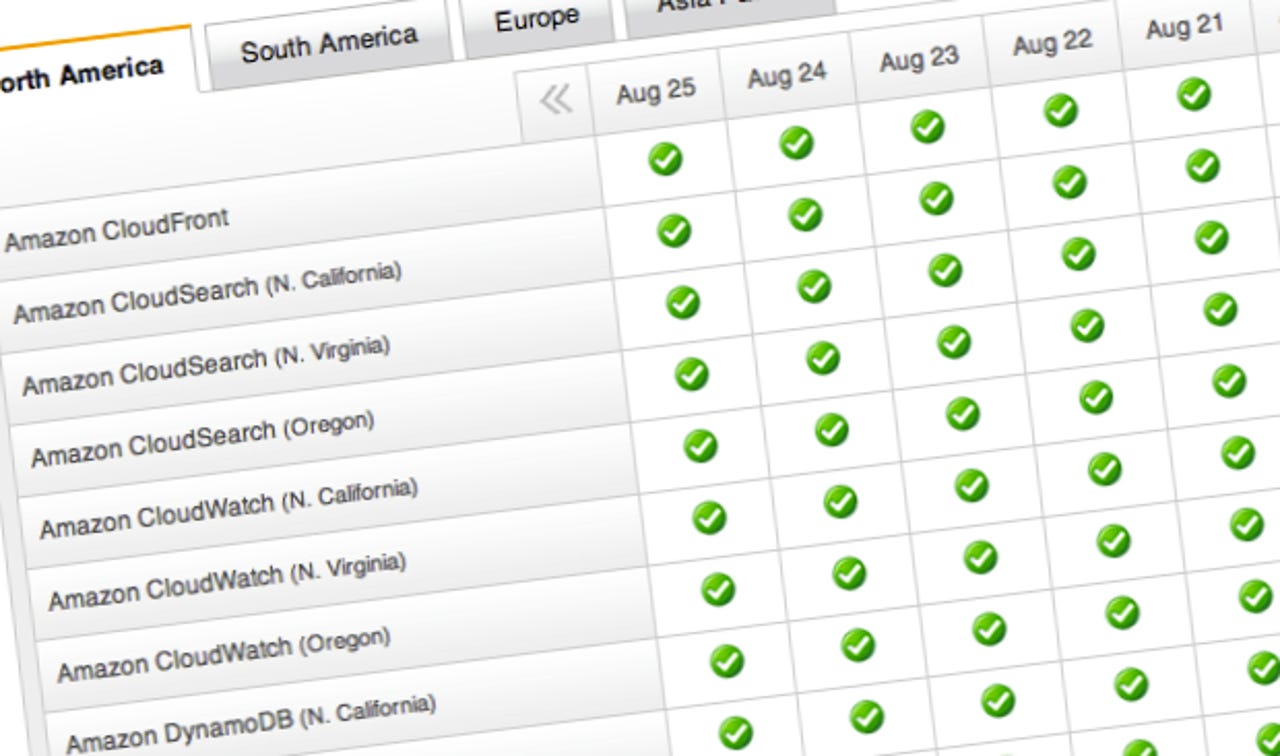Amazon Web Services suffers outage, takes down Vine, Instagram, others with it

Amazon Web Services (AWS), one of the world's largest cloud provider, stumbled over on Sunday for 59 minutes, due to issues with its U.S.-EAST datacenter.
The outage began at about 1 p.m. PT (4 p.m. ET) following connectivity issues in the North Virginia datacenter, which led to elevated API error rates in the region. This led to "degraded experience," according to the AWS status page, which resulted in a "small number of EC2 instances [becoming] unreachable due to packet loss in a single [availability zone]."
Last week, AWS suffered downtime that lasted around 25 minutes. Most websites running on the AWS cloud were unaffected. The biggest casualty of the outage, however, was Amazon.com itself, which rejected customers from accessing its site in the U.S. and Canada.
Other Amazon-owned websites also suffered, including Audible.com, while Netflix continued to power through the problems.
While international sites were unaffected, some crunched the numbers, and estimated that the company could have lost as much as $1,100 in net sales per second. By comparison, Google's five minute outage a week before is said to have cost the search giant more than $545,000.
But the knock-on effect was felt. Users of Vine and Instagram, as well as others — IFTTT, Airbnb, Flipboard, just to name a few — fell at the mercy of its cloud computing parent.
Instagram alerted its users of a fault to its service almost as soon as it occurred:
We know many of you are having trouble loading Instagram. We identified the issue and are working to fix it ASAP. Thanks for holding on.
— Instagram (@instagram) August 25, 2013
Vine caught up, about half an hour later:
We're aware of some issues affecting our servers and are working to address them now. Thanks for your patience and hang tight!
— Vine (@vineapp) August 25, 2013
Amazon is not infallible, neither is Microsoft's Azure or Google's Compute Engine platforms. But on the whole, they all fare relatively well — Amazon generally more than others. In spite of this, one of the reasons why so many sites fell down at the time was because the affected datacenter supplies many high profile sites, including the aforementioned.
The North Virginia U.S.-EAST datacenter, above all other Amazon cloud datacenters, seems to get the worst rap out of them all, yet many companies still offer their services there.
For Amazon, U.S.-EAST is its oldest and largest, but even when Amazon recommends employing georeducancy strategies — simply rolling out a cloud service or application to multiple geographic instances — it's a mystery why so many technology companies still rely on this one datacenter, beyond the realms of supplying "just" the U.S. east coast.
